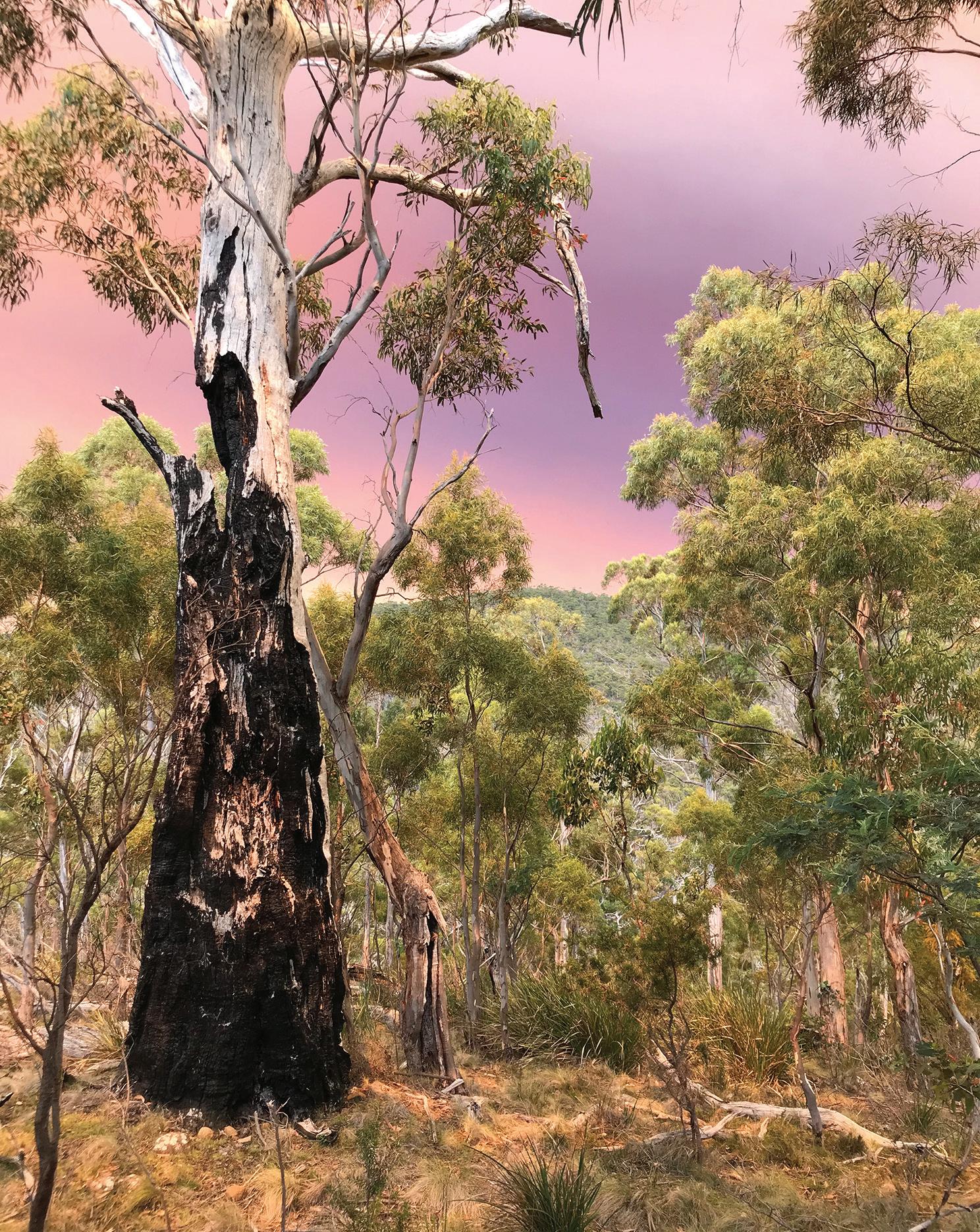
3 minute read
Bushfire threat
A bushfire season that never really left us
John Fisher has been obsessed by Tasmania’s soil dryness index all year, and for good reason.
The index measures how much moisture is in our soils, forest litter, logs and living vegetation and is used to determine when it is safe for the City of Hobart to carry out important bushfire fuel reduction burns in its forests.
Every year the index usually resets to zero. This year it hasn’t.
‘The fire season never really left Hobart this year,’ says John, who manages the City’s bushland reserves and has a long history working in biodiversity and bushfire management in NSW, Queensland, Victoria and Tasmania.
‘It was dry throughout winter, we had a bit of rain in August and September that brought the soil dryness index down enough for us to carry out fuel reduction burns, but conditions have only just been suitable for the sort of low-intensity hazard burns we carry out in Hobart’s forests, woodlands and grasslands.’
Hobart has seen dry spells like this in the past. It happened ahead of the Black Tuesday 1967 bushfires, which took the lives of 62 people across Tasmania, injured 900 and left more than 7000 homeless.
‘The models clearly show that Hobart is going to get hotter and dryer and that the window of opportunity for carrying out hazard reduction burns in our forests will continue to narrow,’ says John.

Summer bushfire smoke shrouds the City of Hobart’s bushland depot. Photo: John Fisher
Although all of Hobart’s bushland reserves are at risk if a severe or catastrophic fire strikes again, the areas of most concern are those that will only burn under extreme conditions, like the tall, wet forests around Fern Tree.
‘History has shown us that intense fire under extreme weather conditions will burn these forests if they are very dry,’ says John. ‘And they are very dry now.’
The City of Hobart has a $1.9 million annual budget to carry out bushfire fuel reduction measures, which include creating and maintaining fuel breaks between bushland reserves and houses, and hazard reduction burns that reduce the amount of flammable material in our forests, woodlands and grasslands.
These measures reduce the risk of dangerous bushfires destroying homes and threatening people. They are also designed to protect the natural values of Hobart’s bushland reserves.
‘Our low-intensity hazard reduction burns are designed to protect critical habitat such as large hollow logs and big old hollow-bearing trees, which provide important refuge for our native wildlife,’ says John.
‘They are very different beasts to a high-intensity bushfire that is out of control during severe or catastrophic bushfire conditions. That sort of fire impacts everything in our forests – soil, fungi, invertebrates, micro flora, small mammals, birds, reptiles – nothing escapes its fury and it can take years or even centuries for ecosystems to recover.’
The lack of rain over the past couple of years has led to a marked lack of regeneration for trees in some of Hobart’s forests. The dryness is particularly noticeable in areas of shallower soils such as in Knocklofty Reserve and Bicentennial Park.
‘Shallow soils can get really hot and hold less moisture than the deeper soils you get at Fern Tree, so if you don’t get any rain plants can lose the ability to regenerate until you get enough rain to replenish the soils,’ says John.
If we see another year without rain some of the tall eucalypts and similar trees could really start to struggle.
Until that rain comes, John will continue to be obsessed by the soil dryness index.

The fires that ravaged Tasmania in early 2019 created an eerie glow over Hobart. Photo: Mischa Pringle










